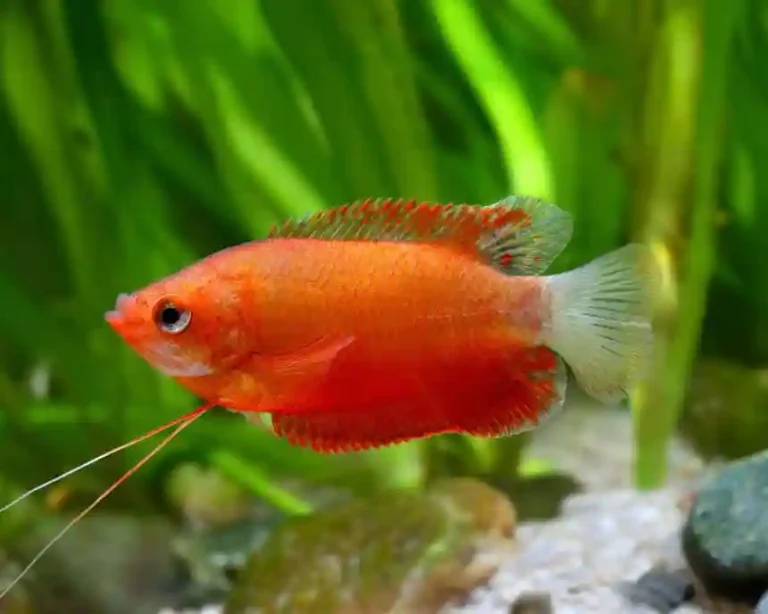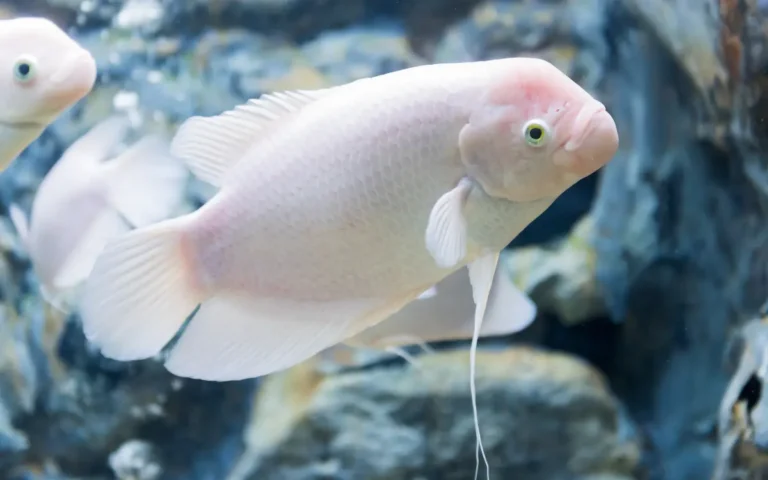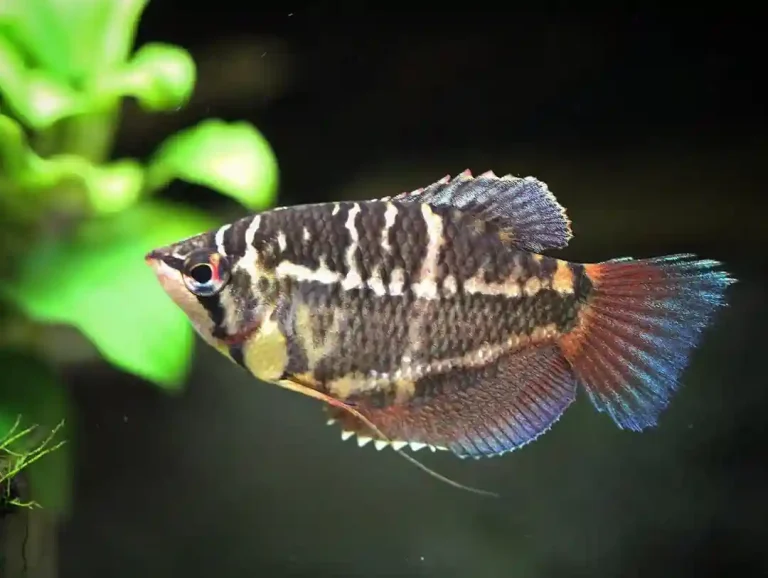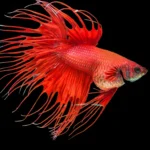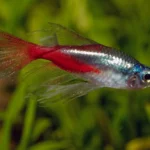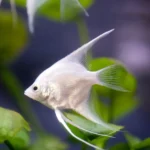Guppies are one of the most beginner-friendly freshwater fish you can keep. They’re colorful, active, and easy to care for, making them a great choice for any community tank. In this guide, you’ll learn how to feed, breed, and set up the perfect tank for guppies plus how to keep them healthy long-term.
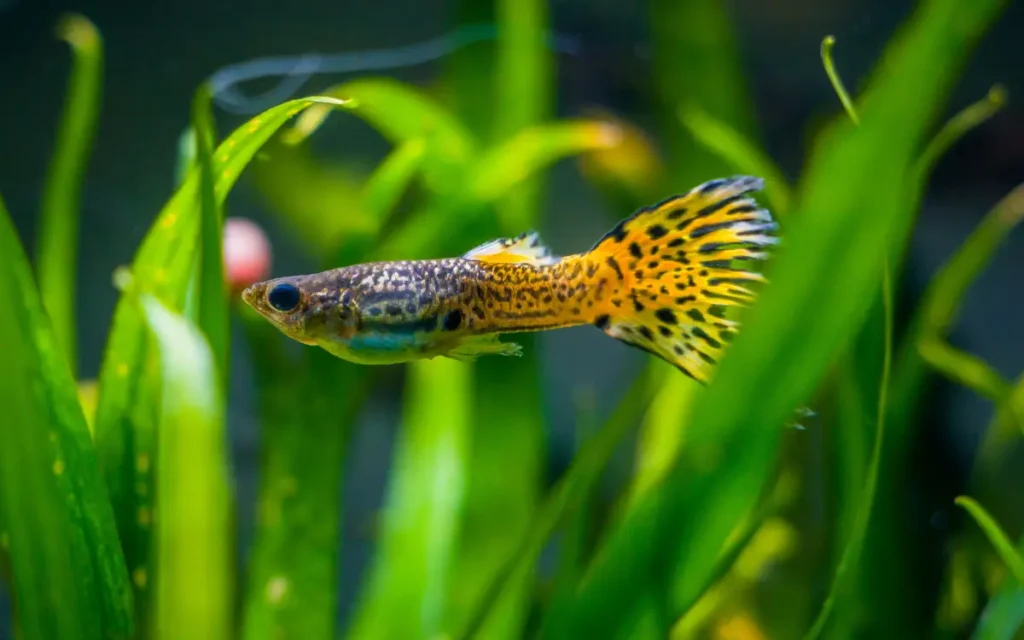
Quick Species Overview
| Category | Details |
| Scientific Name | Poecilia reticulata |
| Family | Poeciliidae |
| Size | 1.5 – 2.5 inches |
| Temperament | Peaceful, active, and social |
| Diet | Omnivorous |
| Lifespan | 2 – 3 years |
| Minimum Tank Size | 10 gallons |
| Compatibility | Great with other peaceful species |
| Care Level | Easy for beginners |
Guppy Varieties (Brief Overview)
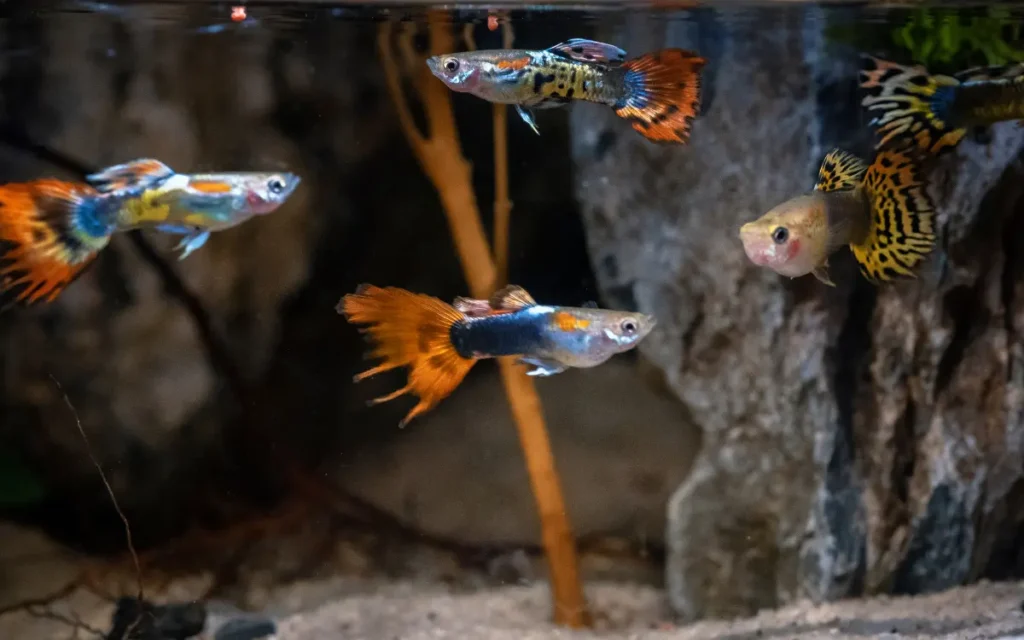
Guppies come in a wide range of colors, patterns, and tail shapes. From Fancy Guppies to Endler’s Livebearers, each variety brings its own charm to the tank.
Want colorful variety? See the top guppy types you can keep
Natural Habitat and Behavior
In the wild, guppies are found in the warm, shallow waters of South America, especially in countries like Venezuela, Brazil, and Guyana. These environments are full of vegetation, giving guppies hiding spots and a steady supply of food like algae and insect larvae.
In home aquariums, guppies thrive in:
- Warm water (75–82°F)
- Plenty of live plants
- Clean, well-filtered tanks with low water flow
How to Choose a Healthy Guppy
When buying guppies, look for:
- Bright colors
- Clear eyes
- Full, undamaged fins
- Active swimming behavior
Male vs. Female Guppies:
Females are larger, less colorful, and often rounder
Ideal Tank Setup for Guppies
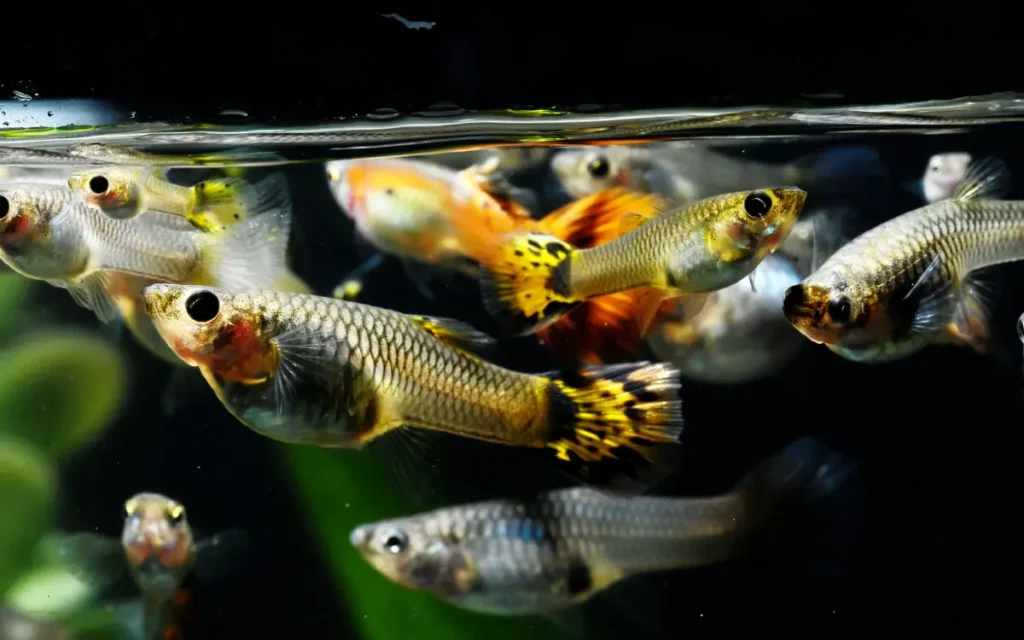
| Tank Essentials | Recommendations |
| Tank Size | Minimum 10 gallons (20+ gallons ideal) |
| Heater | Maintain 75–82°F |
| Filter | Sponge or gentle internal filter |
| Lighting | Moderate lighting for plant growth |
| Substrate | Fine gravel or sand |
| Decor | Live plants like Java moss, caves, rocks |
Maintenance Tip:
Change 20–30% of the water weekly and test water parameters often (aim for pH 6.8–7.5).
Feeding Guppies
| Feeding Details | Info |
| Diet Type | Omnivorous (flakes, pellets, live/frozen) |
| Frequency | 2–3 times per day |
| Amount | What they can eat in 2–3 minutes |
Safe human foods: Boiled spinach, peas (skinned), egg yolk (tiny bits)
Feeding on vacation: Use auto-feeders or vacation food blocks
Breeding Guppies
Guppies are livebearers — they give birth to live fry, not eggs. They’re among the easiest fish to breed.
How to Breed Them:
- Keep 1 male for every 2–3 females
- Use a separate breeding tank or dense plants for hiding fry
- Maintain warm water (78–80°F) and stable water parameters
- After birth (about 4 weeks of gestation), remove adults to avoid fry being eaten
- Feed fry powdered food or baby brine shrimp
Guppy Health & Common Diseases
| Symptom | Problem | Solution |
| White spots | Ich | Raise temp slowly, medicate |
| Torn fins | Fin rot | Improve water quality, meds |
| Scratching | Parasites | Use antiparasitic treatment |
Healthy guppies will be:
- Active
- Bright in color
- Eager to eat
- Swimming socially
Read our full guide: Freshwater Fish Diseases: Symptoms, Causes & Treatment Guide
FAQs
Are guppies beginner-friendly?
Yes, guppies are one of the best fish for beginners.
Do guppies need a heater and filter?
Absolutely. Stable temperature and clean water are key to their health.
Can I keep guppies in tap water?
Yes, if you use a dechlorinator or water conditioner first.
Will guppies eat their babies?
Yes. Always separate fry or use dense plants to protect them.
How many guppies should I keep together?
Start with at least 5–6 in a tank no smaller than 10 gallons.

